Thermopolium – Ancient Roman Restaurant Offered Fast Food But Was It A Good Idea To Eat There?
Ellen Lloyd - AncientPages.com - In modern times fast food has become popular because many simply don’t have time or energy to prepare a proper meal. Ancient Romans loved delicious food, but they could occasionally skip dinner preparations and eat fast food.
Thermopolium was an ancient Roman restaurant which offered its customers fast food. One could get warm meals, as well as drinks. People who were hungry could visit a thermopolium and get something to eat fast.
Ruins of a thermopolium discovered in Pompeii. Credit: Public Domain
The word thermopolium (plural thermopolia) comes from Greek and means literally "a place where (something) hot is sold".
A typical thermopolium had L-shaped counters into which large storage vessels were sunk. Eating outside was something people enjoyed because it was considered an important aspect of socializing.
In a thermopolium people could get cheap meals. Fish or cheese with bread was often served. As dessert, hungry people could get honey and later drink spicy wine.
It may sound like a good place to visit, but a thermopolium had its advantages and disadvantages. Thermopolium was a place mainly for poor people. The advantage with serving this kind of fast food was that everyone could eat. Not everyone Roman had the time or possibility to cook at home. Many poor Romans could not afford a private kitchen.
A thermopolium in Pompeii. Credit: Wikipedia
The disadvantage was that many who visited a thermopolium became drunk and neglected their duties.
People from the upper-class in ancient Rome had a low opinion of those who visited a thermopolium, a place they associated with vagrancy.
See also:
Hypocaust – First Central Heating Invented By Ancient Romans 2,000 Years Ago
What Was Legio Martia And Why Were The Roman Soldiers Called The Martians?
Ancient Romans Loved White Teeth – All Means Were Acceptable To Get Them Even Portuguese Urine
Archaeologists have uncovered several well-preserved ruins of thermopolia in Pompeii and Herculaneum.
A thermopolium was L-shaped and mostly visited by poor people who couldn't afford a private kitchen. Credit: Wikipedia
The Thermopolium of Asellina, in Pompeii has given historian an excellent opportunity to study forerunner of today's restaurant. At the site, archaeologists discovered an almost perfectly preserved thermopolium. Complete jugs and dishes were found on the counter, as well as a kettle filled with water. Archaeologists working at the site also found a jar full of coins, amounting to about two days' income.
The thermopolium, one of the best-preserved sites in Pompeii, has long been closed to the public, but in 2010, after proper restoration this ancient snack bar of the Roman Empire re-opened.
Those who visit the Thermopolium of Asellina can get a sample of baked cheese with honey, just like poor ancient Romans did before the entire city of Pompeii was buried under masses of volcanic ash when Mount Vesuvius erupted August 24, 79 AD.
Written by Ellen Lloyd – AncientPages.com
Copyright © AncientPages.com All rights reserved. This material may not be published, broadcast, rewritten or redistributed in whole or part without the express written permission of AncientPages.com
More From Ancient Pages
-
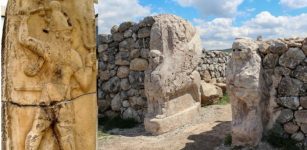 Code Of Nesilim: Ancient Laws Of The Hittites
Ancient History Facts | Jun 14, 2018
Code Of Nesilim: Ancient Laws Of The Hittites
Ancient History Facts | Jun 14, 2018 -
 Unexplained Phenomenon In Ancient Ireland – When Legends, Science And Real Events Collide
Ancient Mysteries | Apr 19, 2018
Unexplained Phenomenon In Ancient Ireland – When Legends, Science And Real Events Collide
Ancient Mysteries | Apr 19, 2018 -
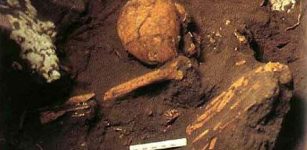 Curious 6,000-Year-Old Skull May Confirm Mythical Ancient Tribe Of Small Dark-Skinned People Did Exist!
Archaeology | Oct 11, 2022
Curious 6,000-Year-Old Skull May Confirm Mythical Ancient Tribe Of Small Dark-Skinned People Did Exist!
Archaeology | Oct 11, 2022 -
 On This Day In History: Emperor Gordian II Loses The Battle Of Carthage – On Apr 12, 238 AD
News | Apr 12, 2016
On This Day In History: Emperor Gordian II Loses The Battle Of Carthage – On Apr 12, 238 AD
News | Apr 12, 2016 -
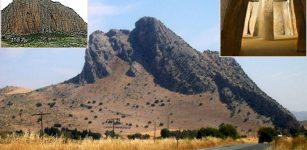 Mysterious Menga Dolmen: A New Very Old Monument Discovered
Archaeology | Sep 21, 2020
Mysterious Menga Dolmen: A New Very Old Monument Discovered
Archaeology | Sep 21, 2020 -
 Immortal Mimi Spirits In Beliefs Of Aborigines Of Arnhem Land
Featured Stories | Mar 26, 2020
Immortal Mimi Spirits In Beliefs Of Aborigines Of Arnhem Land
Featured Stories | Mar 26, 2020 -
 Huginn and Muninn: Powerful Ravens Of Odin, Supreme God In Asgard In Norse Mythology
Featured Stories | Dec 7, 2017
Huginn and Muninn: Powerful Ravens Of Odin, Supreme God In Asgard In Norse Mythology
Featured Stories | Dec 7, 2017 -
 Mystery Of The Ancient Bear Bones In The Aleutian Islands, Alaska
Archaeology | Oct 5, 2023
Mystery Of The Ancient Bear Bones In The Aleutian Islands, Alaska
Archaeology | Oct 5, 2023 -
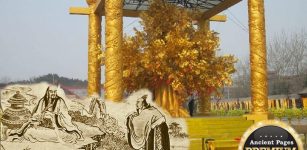 Unravelling The Mystery Of The Yellow Emperor And His Connection To Regulus
Chinese Mythology | Sep 21, 2015
Unravelling The Mystery Of The Yellow Emperor And His Connection To Regulus
Chinese Mythology | Sep 21, 2015 -
 Strange Tooth Raises Unexpected Questions About Human Evolution
Archaeology | Mar 24, 2022
Strange Tooth Raises Unexpected Questions About Human Evolution
Archaeology | Mar 24, 2022 -
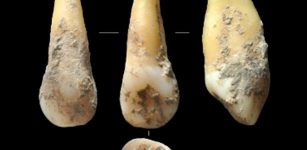 Common genetic origin for farmers from Central Europe and the Mediterranean area
Human Beginnings | Sep 5, 2015
Common genetic origin for farmers from Central Europe and the Mediterranean area
Human Beginnings | Sep 5, 2015 -
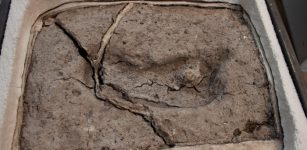 Discovery Of Oldest Human Footprint In The Americas Can Re-Write History
Archaeology | Apr 30, 2019
Discovery Of Oldest Human Footprint In The Americas Can Re-Write History
Archaeology | Apr 30, 2019 -
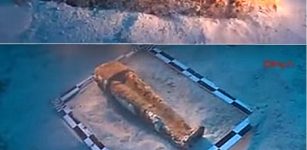 2,700-Year-Old Ceramic Sculpture Of Goddess Found In Aegean Sea
Archaeology | Feb 28, 2017
2,700-Year-Old Ceramic Sculpture Of Goddess Found In Aegean Sea
Archaeology | Feb 28, 2017 -
 Crimean Atlantis: Remarkable Ancient Underwater City Of Akra
Featured Stories | Mar 6, 2017
Crimean Atlantis: Remarkable Ancient Underwater City Of Akra
Featured Stories | Mar 6, 2017 -
 On This Day In History: Battle Of Cowpens Took Place – On Jan 17, 1781
News | Jan 17, 2017
On This Day In History: Battle Of Cowpens Took Place – On Jan 17, 1781
News | Jan 17, 2017 -
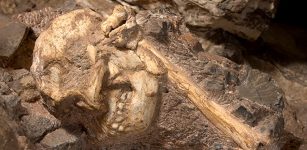 3.6 Million-Year-Old Rare Skeleton Of Human Ancestor Revealed By Researchers In South Africa
Archaeology | Dec 7, 2017
3.6 Million-Year-Old Rare Skeleton Of Human Ancestor Revealed By Researchers In South Africa
Archaeology | Dec 7, 2017 -
 Magnificent Ancient Treasures Of The Mysterious Kangju Kingdom Found By Archaeologists
Archaeology | Jun 11, 2024
Magnificent Ancient Treasures Of The Mysterious Kangju Kingdom Found By Archaeologists
Archaeology | Jun 11, 2024 -
 Nova Anglia: The Anglo-Saxon New England In The East
History | Jun 13, 2022
Nova Anglia: The Anglo-Saxon New England In The East
History | Jun 13, 2022 -
 Deception And Hidden Truth – Ancient Struggle Of The Eagle And Serpent – Part 1
Ancient Mysteries | Sep 4, 2019
Deception And Hidden Truth – Ancient Struggle Of The Eagle And Serpent – Part 1
Ancient Mysteries | Sep 4, 2019 -
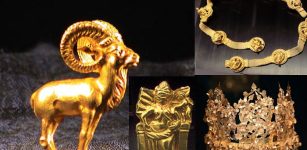 Priceless Artifacts From The Bactrian Hoard Are Missing – Where Are They?
Artifacts | Apr 3, 2022
Priceless Artifacts From The Bactrian Hoard Are Missing – Where Are They?
Artifacts | Apr 3, 2022



